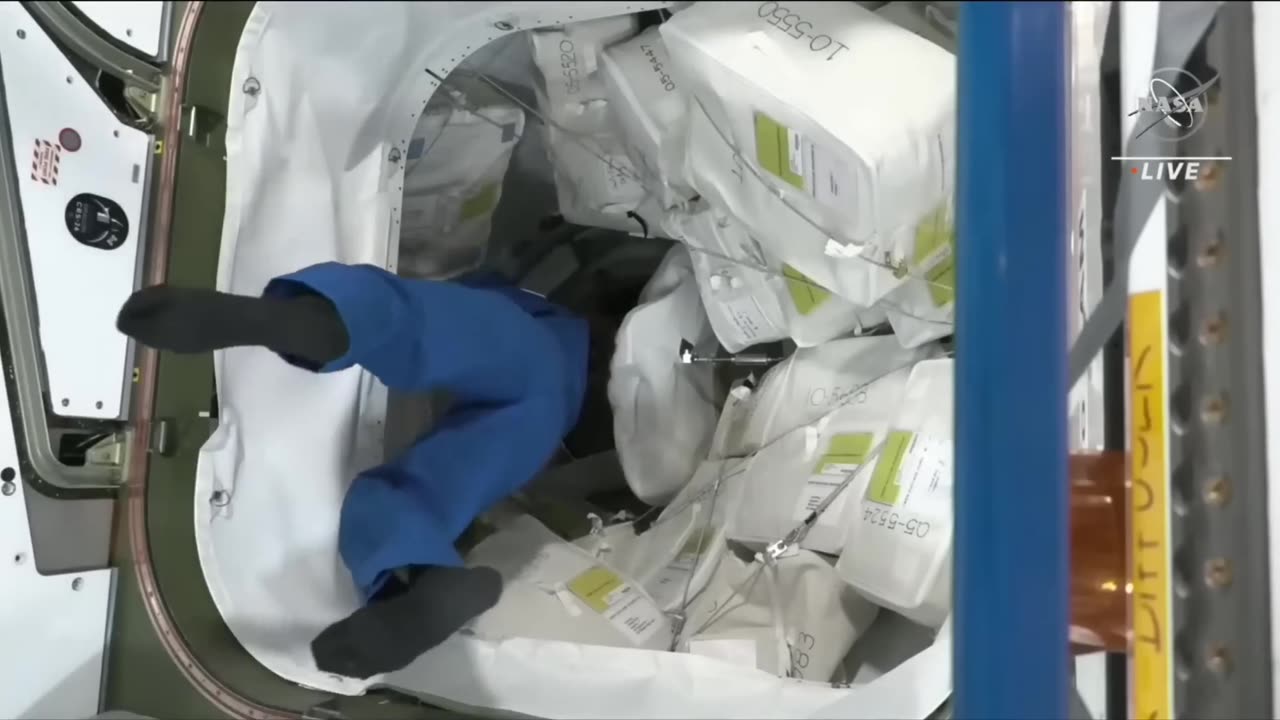Premium Only Content

Nasa space station
Orbital Mechanics: Space stations are placed in low Earth orbit, where they continuously circle the planet. They maintain their orbits by balancing the gravitational pull of Earth with their forward velocity.
Life Support Systems: Advanced life support systems provide astronauts with breathable air, water, and temperature regulation. They also manage waste and recycle resources to minimize dependence on resupply missions.
Structural Design: Space stations are constructed with durable materials to withstand the harsh space environment, including radiation, micro-meteoroids, and extreme temperatures.
Solar Panels: Arrays of solar panels capture sunlight and convert it into electricity to power the station's systems and equipment.
Modules and Laboratories: Space stations consist of interconnected modules, each serving a specific purpose. These can include living quarters, laboratories, storage areas, and more.
Research: Space stations offer a unique platform for scientific experiments that can only be conducted in microgravity. This includes studies in various fields like physics, biology, materials science, and medicine.
Crew and Rotation: Astronauts live and work on the station for several months at a time before returning to Earth. Crew rotations ensure a continuous human presence on the station.
Communication: Space stations communicate with Earth through a network of ground stations. This allows for data transmission, video calls, and real-time control of station systems.
Docking and Resupply: Spacecraft deliver supplies, equipment, and new crew members to the station. Docking ports enable these vehicles to attach safely to the station.
International Collaboration: Many space stations, like the International Space Station (ISS), are the result of international cooperation involving multiple countries and space agencies.
-
 1:01:03
1:01:03
VINCE
2 hours agoE.J. Antoni On Tariffs, Trade Wars, and the Economy | Ep. 09 - 03/27/25
84.7K111 -
 LIVE
LIVE
LFA TV
15 hours agoSHOW NO MERCY! | LIVE FROM AMERICA 3.27.25 11AM
2,422 watching -
 LIVE
LIVE
Bannons War Room
1 month agoWarRoom Live
17,634 watching -
 1:00:50
1:00:50
BonginoReport
4 hours agoNPR Can Hate Us on Their Own Dime - Early Edition With Evita (Ep.169) - 03/27/2025
117K101 -
 2:10:25
2:10:25
Matt Kohrs
11 hours agoMarket Open: Bull Trap Set?! || The MK Show
29.7K1 -
 LIVE
LIVE
The Big Mig™
3 hours agoArk of The Covenant The CIA Locates the Holy Relic
5,652 watching -
 2:05:42
2:05:42
FusedAegisTV
21 hours agoFINAL Switch 1 Nintendo Direct! REACTION 3.27.2025 | FusedAegis Presents
1.51K -
 51:03
51:03
Randi Hipper
1 hour agoMASSIVE NEW CRYPTO TREND YOU NEED TO KNOW!
3.8K -
 1:15:35
1:15:35
Dear America
12 hours agoTrump’s America First Policies Are Working! + Congressional Republicans GRILL NPR’s Leftist CEO!
44.3K13 -
 LIVE
LIVE
Wendy Bell Radio
6 hours agoBullies Get A Beatdown
8,905 watching